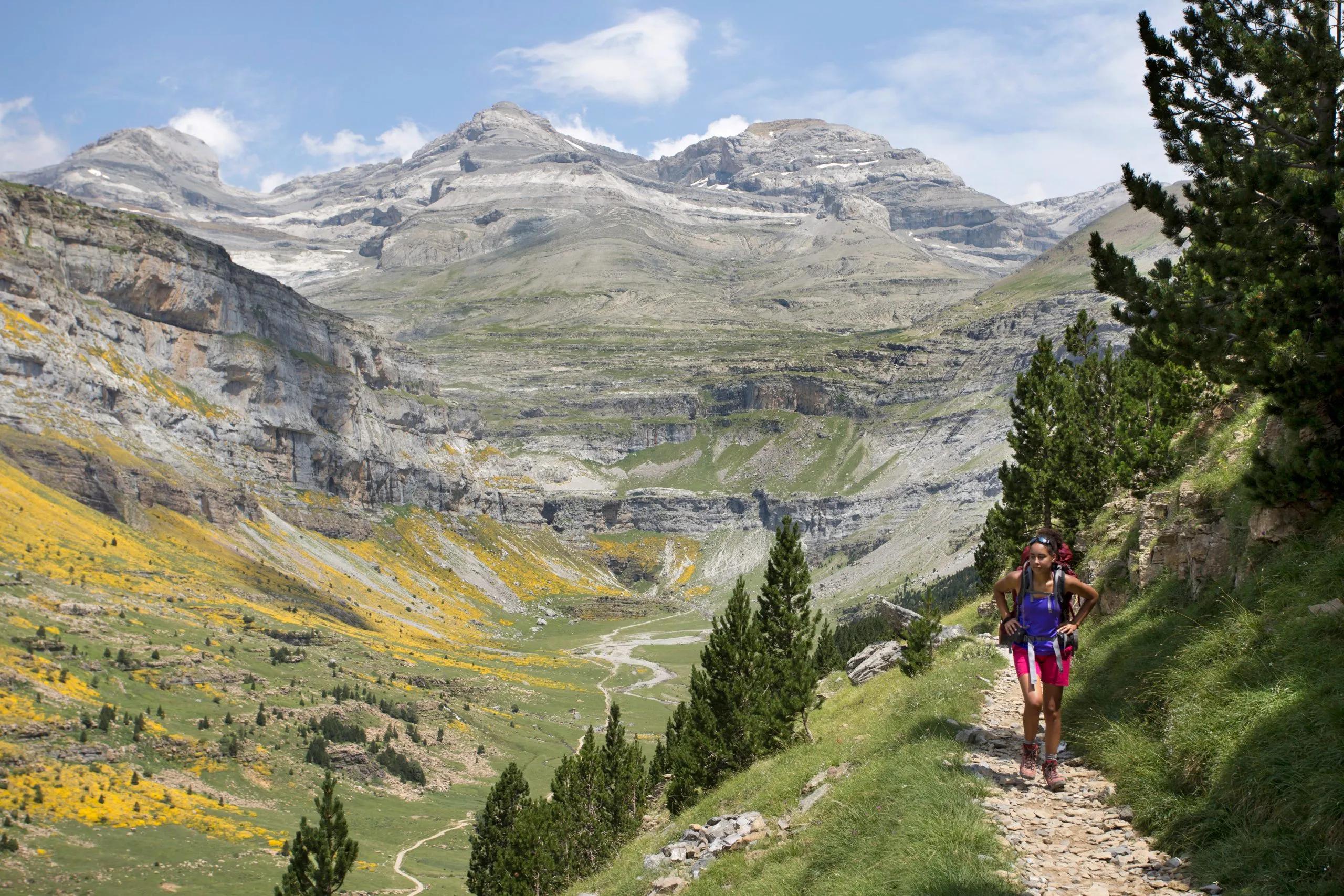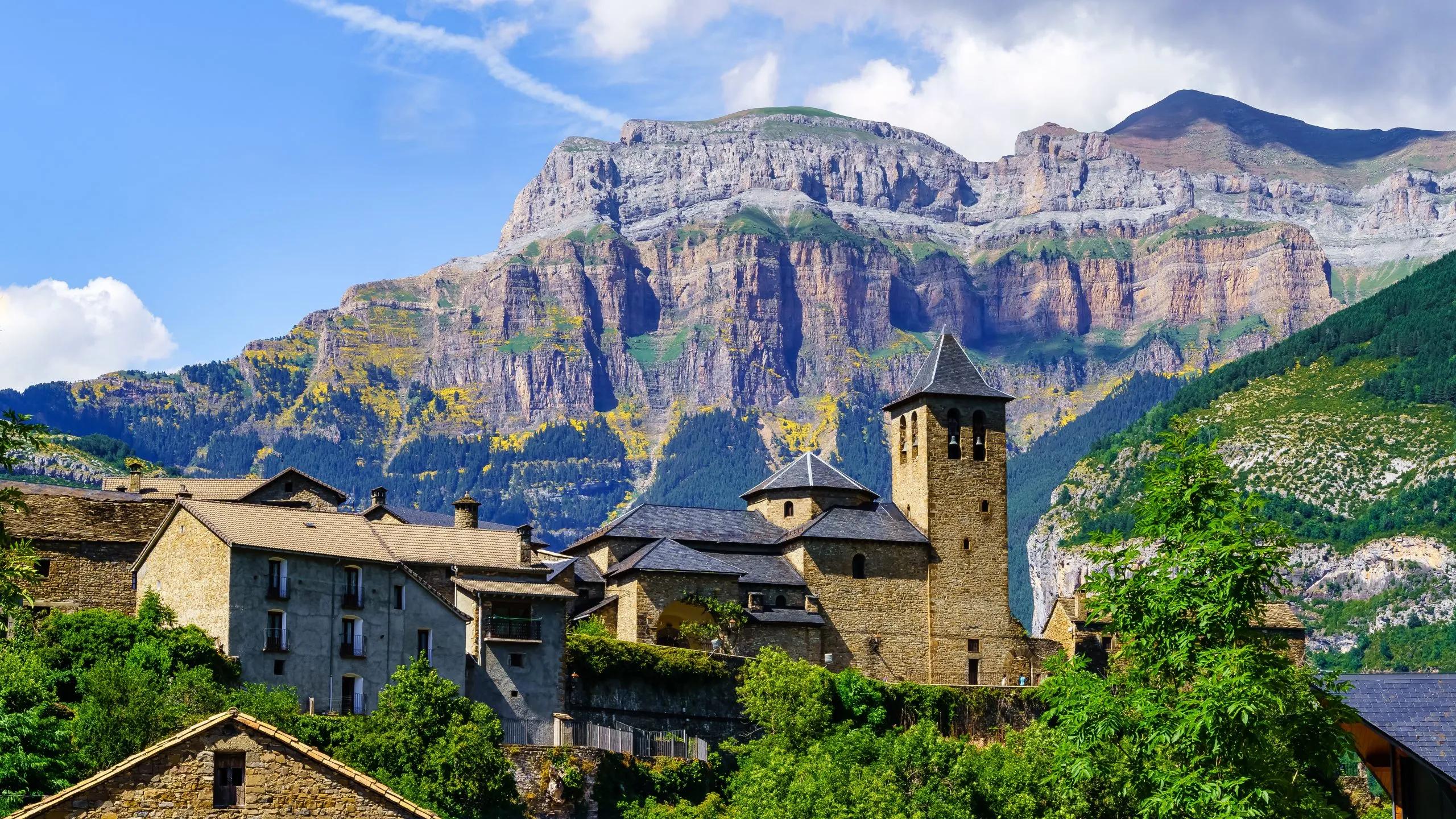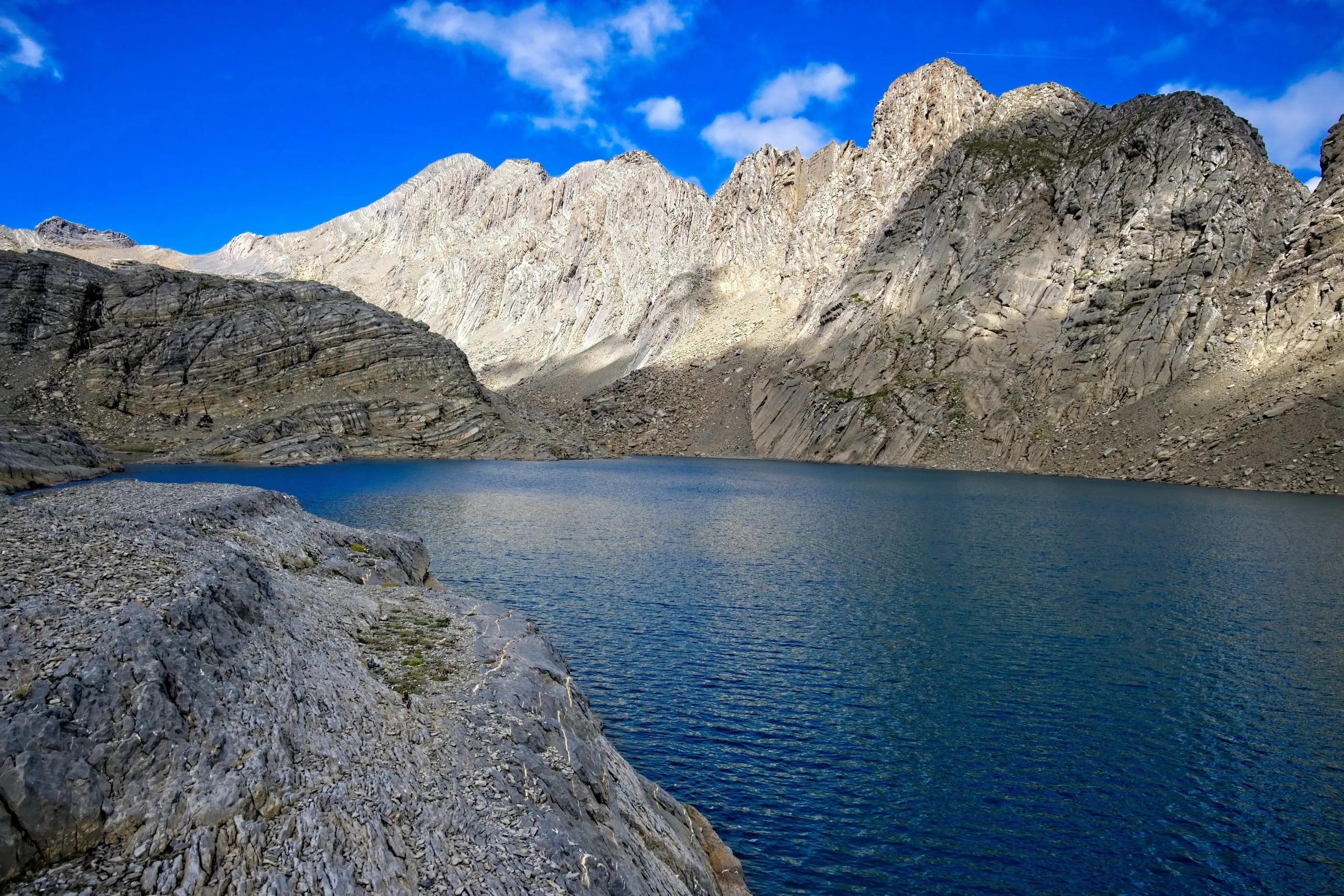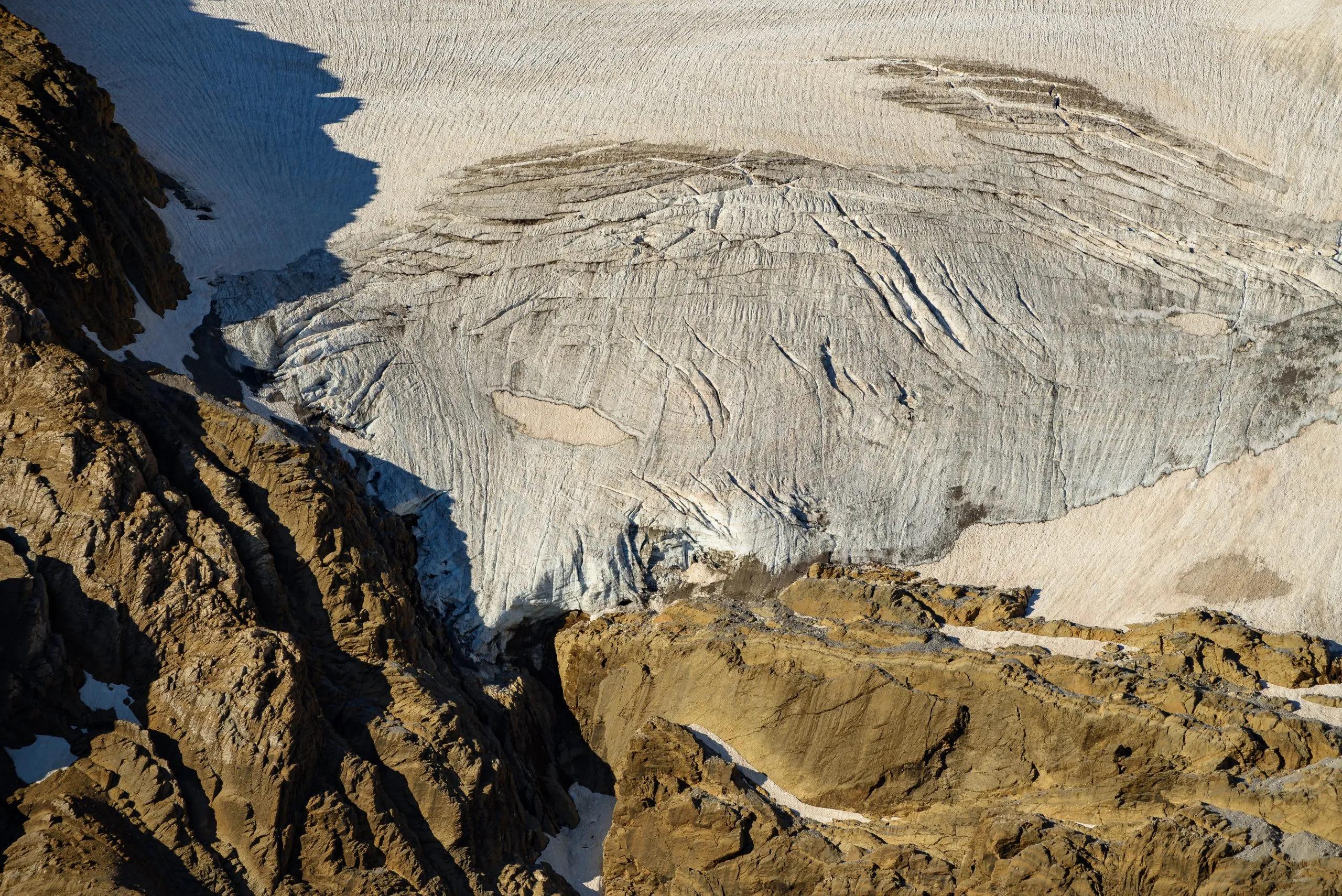











Alta Ruta de los Perdidos
8 days / 7 nights
|
Starting point
Refugio Bujaruelo
Finish point
Refugio Bujaruelo
Season
From July to September
Technical level
4/5
Fitness level
5/5
Tour type
Hut-to-Hut
Starting point
Refugio Bujaruelo
Finish point
Refugio Bujaruelo
Season
From July to September
Technical level
4/5
Fitness level
5/5
Tour type
Hut-to-Hut
Highlights
- Explore the historic and stunning Monte Perdido and Vignemale massifs
- Traverse both the Ordesa y Monte Perdido National Park and the French Pyrenees National Park
- Experience the changing landscapes of Europe's southernmost glaciers, waterfalls, and rivers
- Discover the breathtaking Cirque de Gavarnie, a natural geological amphitheater
- Hike through the lush forests and scenic trails of the Valle d'Ossue
Itinerary of the trip
FREE ITINERARY
Get Your Travel Itinerary
Loved the itinerary? Enter your email below, and we'll send a copy straight to your inbox.
What’s included in the price?
Self-guided
NOT INCLUDED
OPTIONAL EXTRAS
Guided
NOT INCLUDED
OPTIONAL EXTRAS
What to bring to the tour
- Hiking shoes/boots
- 25 to 45-liter backpack
- Base layer
- Sports T-shirts
- Hiking shorts
- Hiking water-repellent pants
- Waterproof jacket
- Midlayer
- Sports socks and underwear
- Leisurewear for evenings
- Down jacket
- Gloves
- Shade hat/cap
- Warm headwear
- Sunscreen
- Sunglasses
- Headlamp
- Hiking poles
- ID card or passport
- Snacks
- Cash
- Water bottles or hydration pack
- Sleeping liner
- Toiletries
- Toilet paper
- Small first aid kit
Alta Ruta de los Perdidos, renowned as the quintessence of Pyrenean trekking, takes you through ever-changing landscapes, from the southernmost glaciers of Europe to the captivating blend of waterfalls, woods, and rivers.
The trek is a circular route encompassing the lofty Monte Perdido and Vignemale massifs, traversing the national parks of both Spain and France.
However, the Alta Ruta de los Perdidos is a challenge even for the most experienced hikers. Its long stages demand exceptional fitness and hiking proficiency. The terrain includes steep and slightly exposed sections.
The route's rigorous nature means that luggage transfer isn't possible, adding to the raw and immersive experience of high-mountain trekking.
For those who dare to take on this adventure, our service ensures a seamless experience. We manage all hut bookings, provide round-the-clock support on the route, and equip you with GPS navigation and an extensive digital guidebook.
Our commitment is to make your journey comfortable and safe, allowing you to fully engage with the wild beauty of the Alta Ruta de los Perdidos.
Frequently Asked Questions
Ratings & Reviews

5.0 average rating

I had an absolutely wonderful experience with Hut to Hut Hiking. They were exceedingly responsive, patiently answering my many emails' worth of questions about itineraries, schedules, logistics, and the like. They helped to create an absolutely perfect trek according to the limited time I had and they provided helpful information for me to organize travel to and from the start and end points. Hut to Hut's communication is professional, their website is useful, and the itinerary and GPS tracking information they sent me once I paid/booked was flawless. The trails were easy to follow, Ride with GPS worked perfectly, and I was so grateful to have relied on a company to facilitate my route in a country where I was unfamiliar. I'm used to planning my own routes, but Hut to Hut Hiking's expertise and insight made the entire experience infinitely more pleasant.


We had a lovely hike today with our guide Klemen. He personalized the tour on our needs and interests, so that we saw places we wouldn't without his experience. The hike was a little bit slippery after the rain from the last days and it went a lot upwards, but it was totally worth it! Thanks again :)


Carros de Foc was an unforgettable experience. The loop took me through stunning high-altitude landscapes with glacial lakes, rocky ridges, and peaceful valleys. The huts were perfectly located and offered a great place to unwind after a full day of hiking. Anja’s recommendations on pacing and what to pack were spot-on, making the entire experience seamless. This trek is ideal for those who want to fully immerse themselves in the Pyrenees’ natural beauty.
I had an absolutely wonderful experience with Hut to Hut Hiking. They were exceedingly responsive, patiently answering my many emails' worth of questions about itineraries, schedules, logistics, and the like. They helped to create an absolutely perfect trek according to the limited time I had and they provided helpful information for me to organize travel to and from the start and end points. Hut to Hut's communication is professional, their website is useful, and the itinerary and GPS tracking information they sent me once I paid/booked was flawless. The trails were easy to follow, Ride with GPS worked perfectly, and I was so grateful to have relied on a company to facilitate my route in a country where I was unfamiliar. I'm used to planning my own routes, but Hut to Hut Hiking's expertise and insight made the entire experience infinitely more pleasant.


We had a lovely hike today with our guide Klemen. He personalized the tour on our needs and interests, so that we saw places we wouldn't without his experience. The hike was a little bit slippery after the rain from the last days and it went a lot upwards, but it was totally worth it! Thanks again :)


Carros de Foc was an unforgettable experience. The loop took me through stunning high-altitude landscapes with glacial lakes, rocky ridges, and peaceful valleys. The huts were perfectly located and offered a great place to unwind after a full day of hiking. Anja’s recommendations on pacing and what to pack were spot-on, making the entire experience seamless. This trek is ideal for those who want to fully immerse themselves in the Pyrenees’ natural beauty.
All available guidance options
Private Guided Solo
Experience the great outdoors on a private guided tour tailored just for you...
Private Guided Group
Get together a group of your hiking buddies and leave the rest to us! All you have to do is sit back, relax and enjoy a tour built around your group’s preferences. With an experienced guide accompanying you every step of the way, you’ll get the most out of your hike without having to stress about the details.
Self-guided
Are you looking for a good adventure and limitless flexibility? Then you should try out a self-guided tour, perfect for independent explorers who want to set their own pace. Without the need to stick to a group schedule, you’re free to linger at scenic viewpoints while the logistics are taken care of in advance.

HASSLE-FREE
We handle itineraries, accommodations, and anything else you prefer not to deal with, so you can enjoy a carefree hike.

BOOK WITH CONFIDENCE
We are a financially protected company, fully bonded and insured, keeping your money safe and allowing you to travel with confidence.

TRIED & TESTED ADVENTURES
Only the best hut to hut hikes in Europe, cherry-picked by our local team with an in-depth knowledge of the region.

UNBEATABLE SUPPORT
Our 24/7 customer support is where we show our passion, bringing you a better experience by making your well-being our number one priority.















































